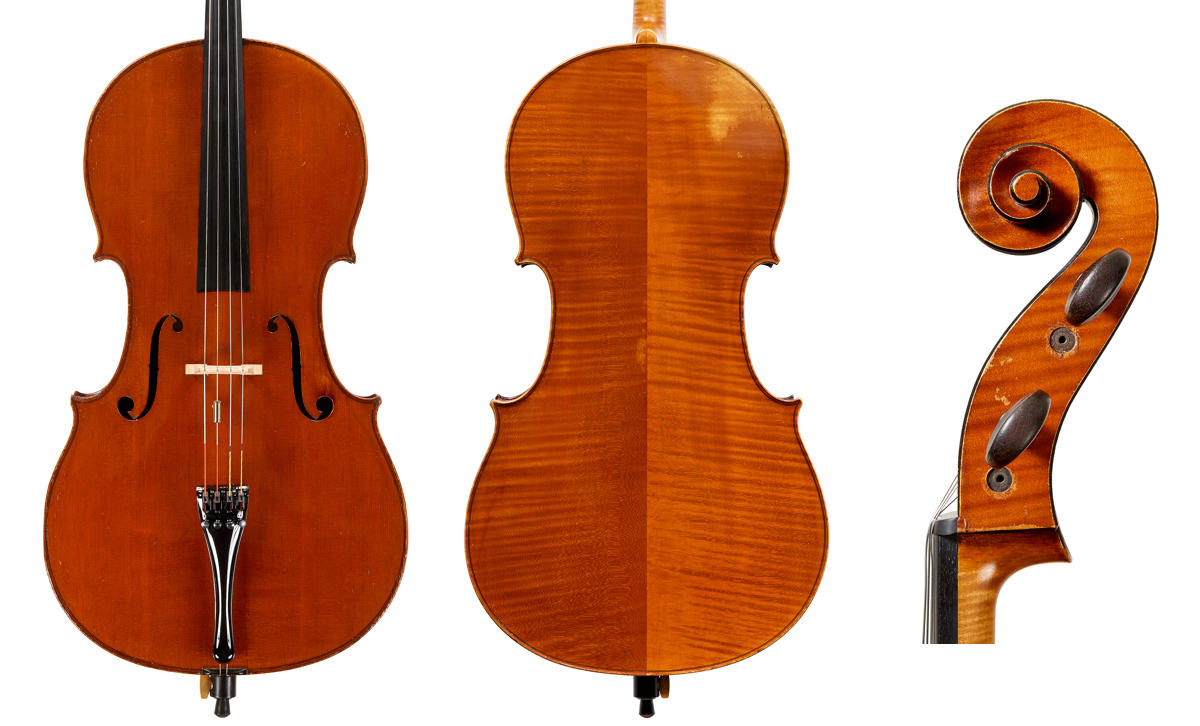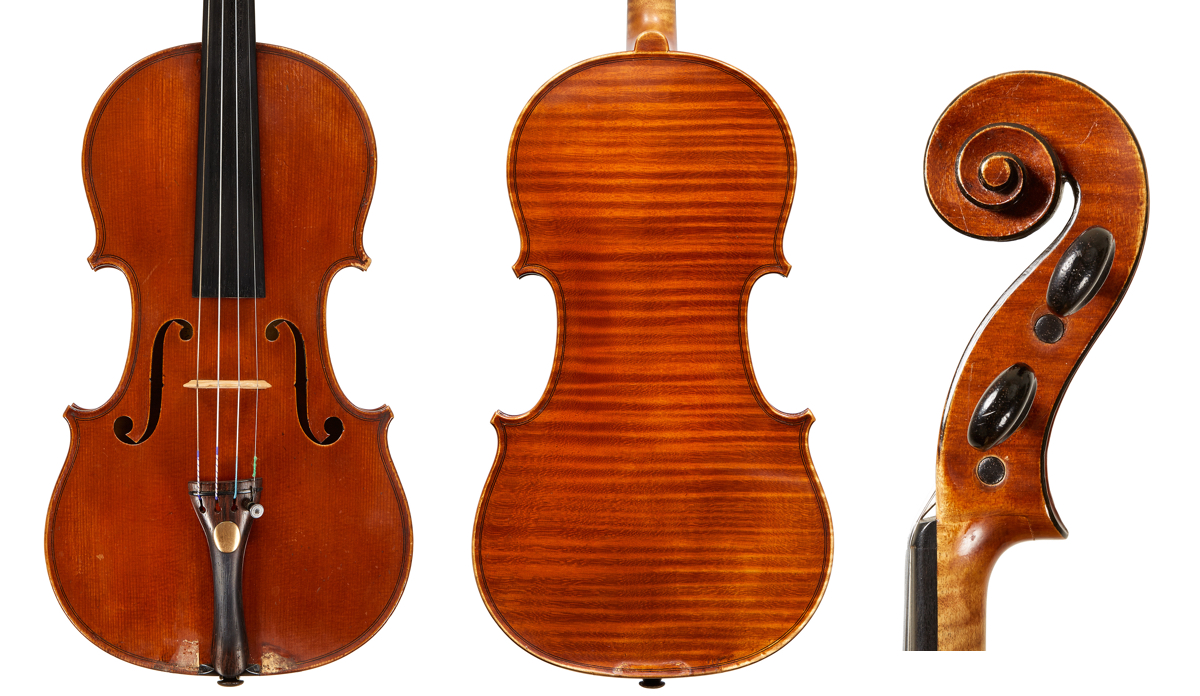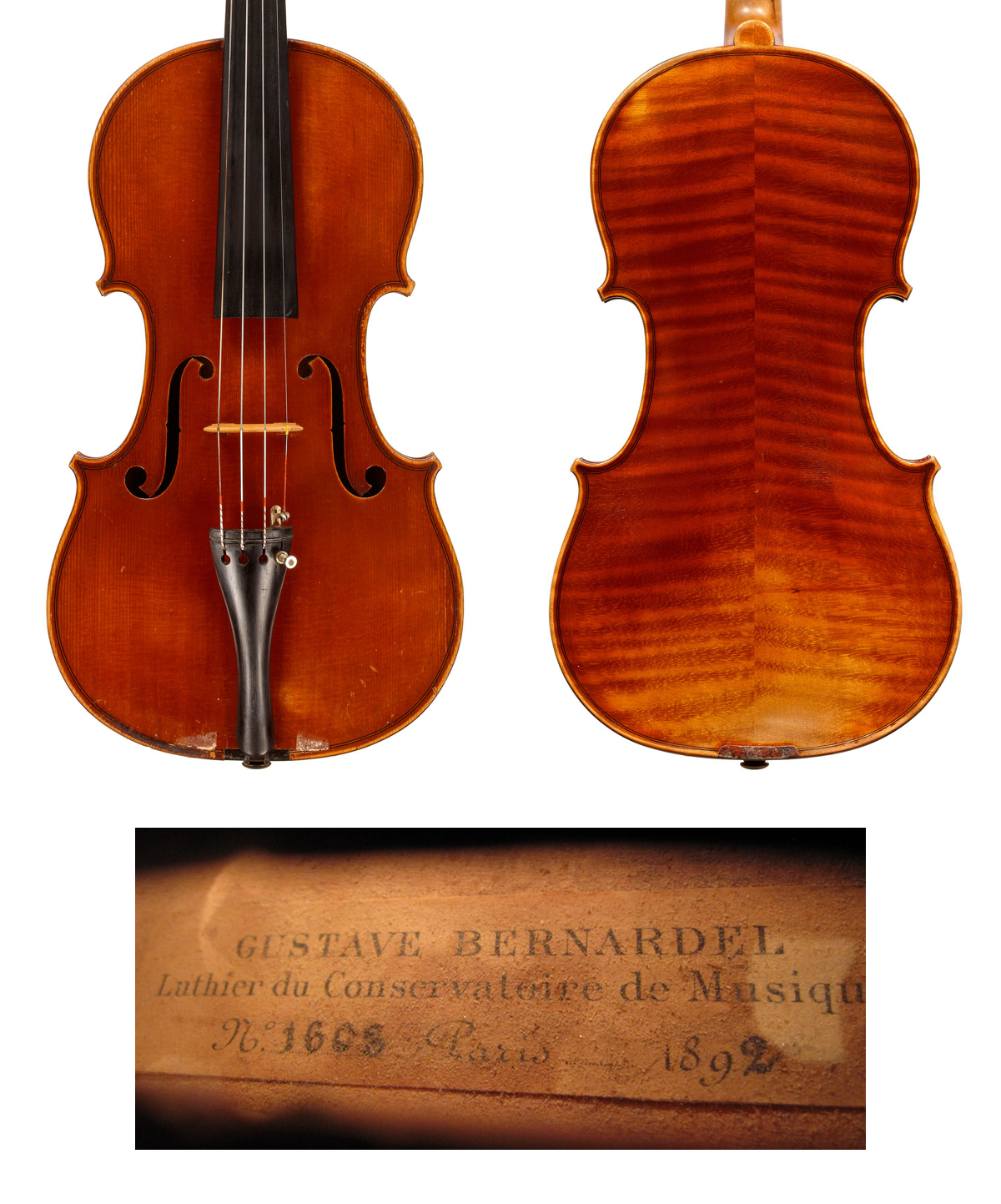As we saw in part 3, Charles Adolphe Gand’s death left his younger brother, Charles Eugène, to run the famous Gand Frères business alone. This appeared to be too great a task for one person. However, the Bernardel shop was located across the street and a thought evidently struck him: why not solidify a relationship which dated from the Lupot era by asking the Bernardel family to join the Gand establishment and form a partnership? [1]
Maison Gand & Bernardel Frères (1866–86)
Thus in 1866 a new company was formed, composed of three partners: Charles Eugène Gand, Ernest Auguste Bernardel and Gustave Adolphe Bernardel. Sébastien Bernardel was by then of retirement age, and it appears that it was only his two sons who decided to create the new association with Gand. The Bernardel brothers had good reasons to accept Gand’s offer, as he was considered to be one of the best violin makers in Paris. Gand also bore the title Luthier de la Musique de l’Empereur and of the Conservatoire Imperial de Musique. To be connected to the Gand Maison was, for the Bernardel brothers, very prestigious.
However, something unexpected happened. Instead of having the two new partners join Gand in the premises that his father had acquired from Gabriel Koliker in 1819, the opposite occurred. Gand moved across the street into the Bernardel premises. Perhaps the Bernardel accommodation was more functional and for that reason it was worth Gand leaving the house where he had been raised. [2]
As previously had occurred after Gand’s father’s death, two urgent tasks presented themselves. The first was to inform the firms’ clients of the changes resulting from the new association. This was not really an issue since both shops were well known and respected. The second task was to contact once again the Director of the Conservatoire de Musique, requesting the continuation of the official function which would include the two new partners. The request was accepted and all three partners were appointed to the official function.
The new association having been officially settled, time was pressing to prepare for an important event: the Paris Exposition Universelle of 1867. Napoleon III was still in power and he intended to showcase France to the world. The event was a great success, with 60,000 participants exhibiting their products and 11 million visitors from all over the world. Gand & Bernardel Frères won a silver medal and their work was highly praised in various publications, including La Musique a l’Exposition Universelle de 1867 by Pontecoulant.
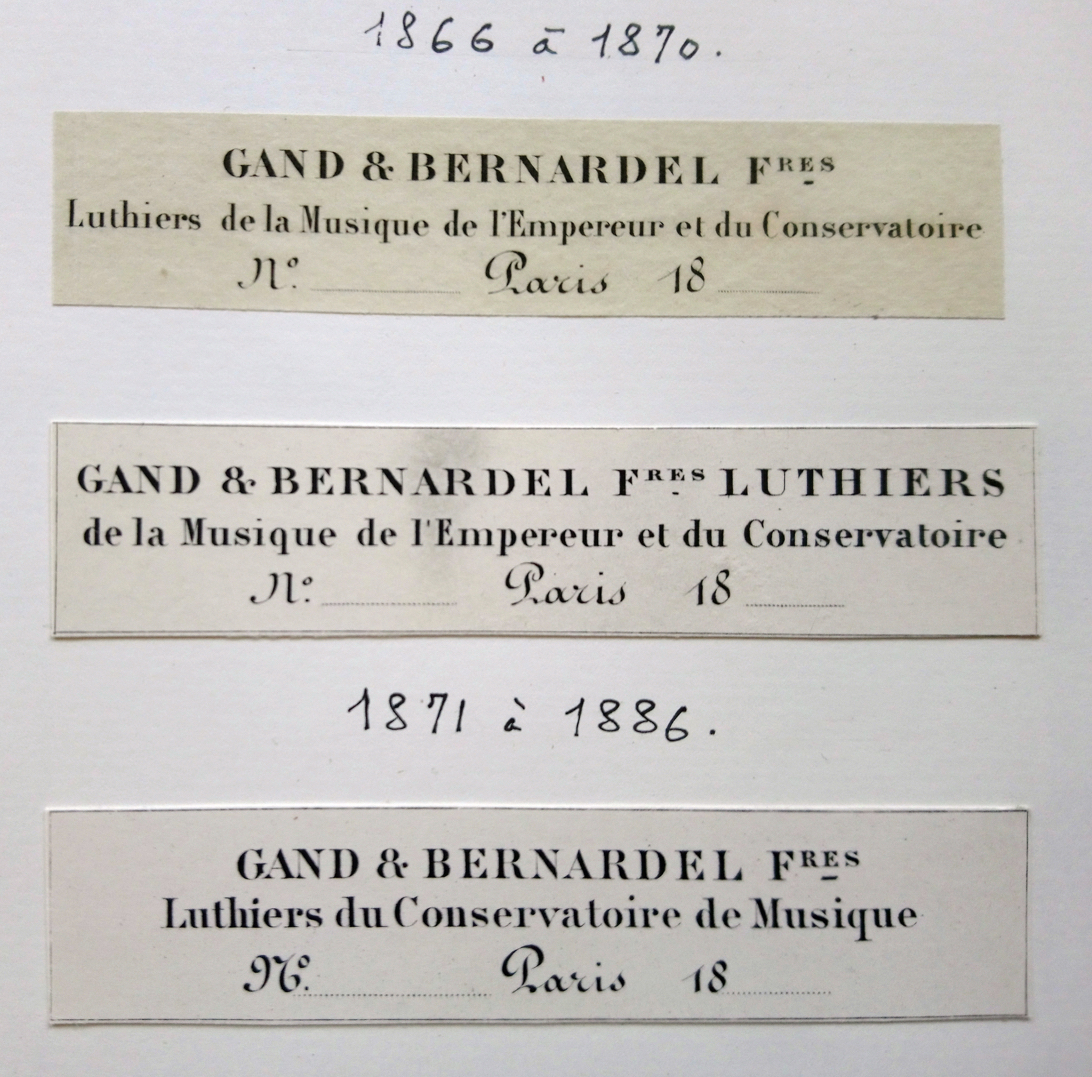
Three labels used by Gand & Bernardel Frères between 1866 and 1886. Image: courtesy Gael Francais
Three labels from the Maison Gand & Bernardel Frères were used during this 20-year period. The first, used between 1866 and 1870, still included the title Luthiers de la Musique de l’Empereur et du Conservatoire. The year 1870 signaled the end of the Empire and the beginning of the Third République (1870–1940). Therefore the next labels, used from 1871 to 1886, only read ‘Luthiers du Conservatoire de Musique’. This reduced title did not, however, diminish the importance of the new association in the music world.
The catalog written by Charles Eugène Gand in 1870, known as the Catalogue descriptif des instruments de Stradivarius et J. Guarnerius and featuring 252 instruments by Stradivari and Guarneri ‘del Gesù’, testifies to the volume of prestigious instruments that passed through the hands of this Maison. [3] Charles Eugène Gand was one of the best 19th-century violin experts and an exceptional businessman. Like his father, he dealt with the most famous concert artists of his time, including Joachim, Dancla, Sauzay, Vieuxtemps and Sainton. The amateurs of the aristocracy were also excellent clients, such as the Comte Molitor, the Marquis Doria and the Vicomte de Greffuhle. All of them organized music soirées at which virtuosos were invited to play. The collectors were financially the most important clients, such as Andre Wilmotte and David Laurie, who purchased from Gand & Bernardel Frères a total of 47 instruments by Stradivari and Guarneri (Wilmotte bought 23 and Laurie 24).

The label created by Gand & Bernardel Frères for the instruments they were commissioned to make for the Palais du Trocadero orchestra in 1878. Image: courtesy Gael Francais
The year 1878 represented the height of the Maison’s glory. Not only did it win a gold medal at the 1878 Exposition Universelle, but it was also chosen by the French government to build the instruments for the Palais du Trocadero’s orchestra. This involved a total of 86 instruments (32 violins, 18 violas, 18 cellos and 18 double basses). A third label was created especially for the occasion: ‘Gand & Bernardel Frères, Luthiers du Conservatoire, Paris 1878, Palais du Trocadero.’
Maison Gand & Bernardel (1886–92)
In 1886 Ernest Bernardel decided to retire, leaving Charles Eugène Gand and Gustave Bernardel to continue their association. After this date the Maison Gand & Bernardel used one main label which mentioned that Gand & Bernardel kept the official function of Luthiers du Conservatoire de Musique, previously held by Lupot and Charles François Gand. In 1889 the government of the Third République decided to organize a new Exposition to celebrate the centennial of the Revolution. Around 60,000 exhibitors and 32 million visitors attended the event. Gand & Bernardel did not miss the opportunity to exhibit their latest work.

The label used by the Gand & Bernardel firm after 1886. Image: courtesy Gael Francais
Charles Eugène Gand was now at the peak of his career. His violin shop was one of the largest in Paris and he was internationally renowned as a violin expert. The only task left was to choose a successor. Unfortunately his only son, Ernest, was not interested in the profession and chose instead to be an attorney. Ernest married a young woman from the haute bourgeoisie, which indirectly propelled Charles Eugène to a higher social status, passing from an artisan to a ‘grand bourgeois’.
In the end the problem of succession did not arise for Charles Eugène, who died unexpectedly after a short and painful illness on February 5, 1892. Three days later a religious ceremony was held at which the whole orchestra of the Opera Comique played in his honor. At the funeral the warmest eulogies were offered, referring to his kindness and generosity. Arthur Pougin, on behalf of the Musician Association of which Gand was a member, described him as a ‘man of honor, gallant man, man with a welcoming heart, always ready to help,’ while Alfred Hill wrote that, ‘although absorbed by the shop’s daily operations, Gand never left his work bench and still varnished most of the instruments.’ [4]
Maison Gustave Bernardel (1892–1901)
What exactly was Gustave Bernardel’s role in the Gand & Bernardel Frères association? No official document reveals it, but it seems that he was mostly in charge of the workshop. When Ernest Bernardel retired in 1866, he suddenly had to face new responsibilities as second partner. By the time Charles Eugène Gand died, he was fully prepared to take over the reins of the company.
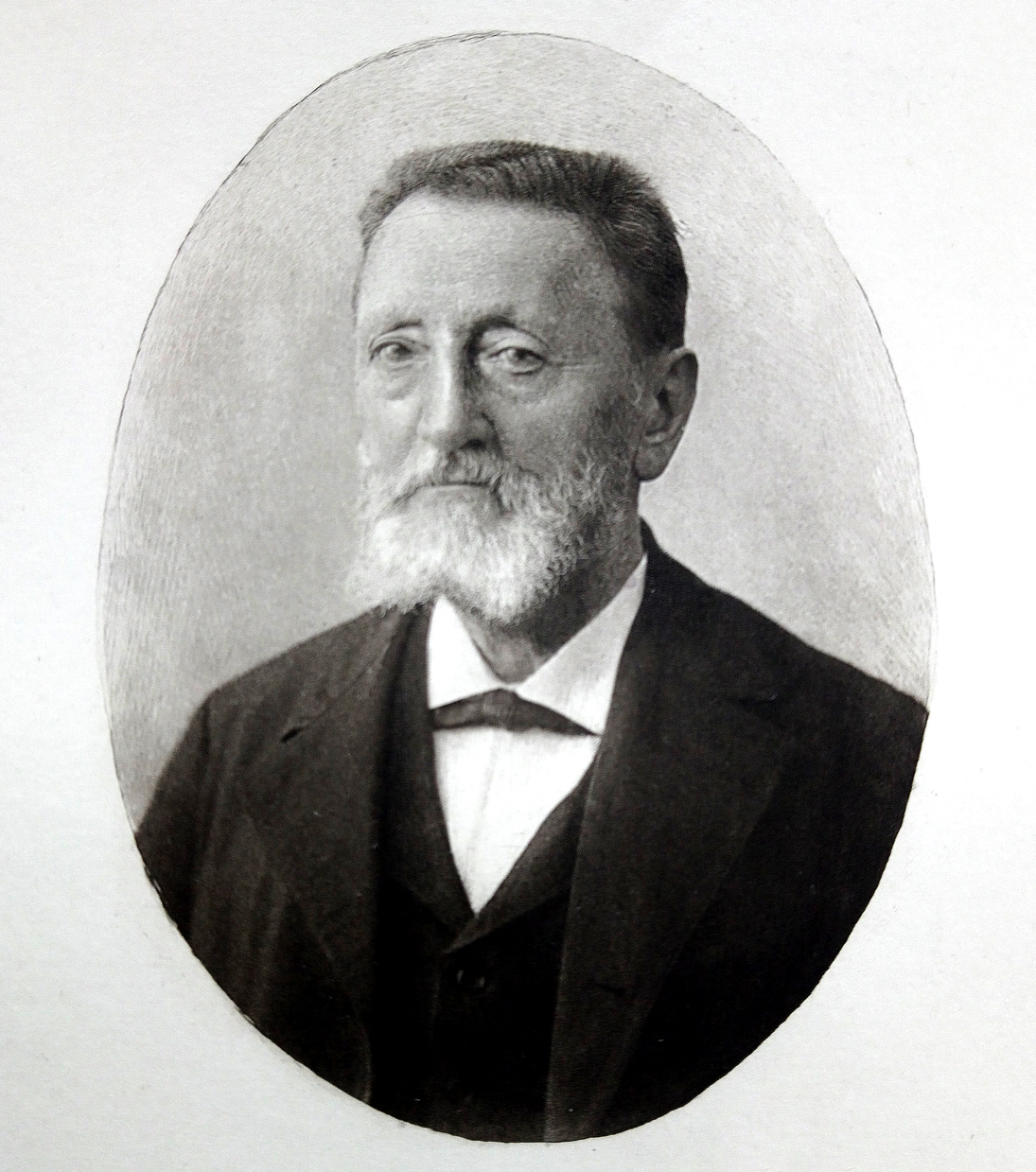
Gustave Bernardel, who sold the Gand & Bernardel firm to his co-workers Henri Français and Albert Caressa in 1901. Image: courtesy Gael Francais
As successor to the Maison founded by Nicolas Lupot, Bernardel continued diligently to promote its fame. In 1894 he took part in two exhibitions in Anvers and in Lyon, then another in 1897 in Brussels and finally the most important one: the Paris Exposition Universelle of 1900. By then Bernardel was preparing to retire and was himself confronted with the problem of succession. There was no direct descendant who was able to take his place. His nephew, Léon Bernardel, who had worked in the shop for nearly 30 years, was the logical successor. However, it seems that for personal reasons he chose to open his own shop in Paris.
Bernardel therefore chose two trusted co-workers: Henri Français, who had joined Gand & Bernardel Frères in 1880; and Albert Caressa. Bernardel retired in 1901 and the new company of Caressa & Français was duly founded.
Part 5, which concludes the series, follows the fortunes of the firm in the hands of Albert Caressa and Henri Français, and finally Emile Français.
Gael Francais is Jacques Francais’s nephew, Emile Français’s grandson and Henri Français’s and Albert Caressa’s great-grandson. He is the last descendant of one of the most ancient lines of instrument makers in France, going back to 1612.
Notes
[1] In the Lupot shop, Sebastien Bernardel had been a co-worker of Charles François Gand until 1824.
[2] Sylvette Milliot refers to documents that describe the Bernardel premises as being two buildings surrounding a courtyard. The Bernardels lived in the building in the left and their shop was located in the building on the right with two large rooms, one for the stringed instruments and the other for the pianos. In the Gand premises, only the ground floor was used as a violin shop. (S. Milliot, Lupot et ses Successeurs, vol. 1, p. 174, note 2.)
[3] Gand, Eugène, Catalogue Descriptif de Stradivarius et Guarnerius del Gesu, 1870, facsimile; Milliot, Sylvette, Vingt ans d’expertise d’un grand luthier parisien: 1870-1891, Les Amis de la Musique, Spa 1994.
[4] Alfred Hill, ‘Musical News’ February 26, 1892.
